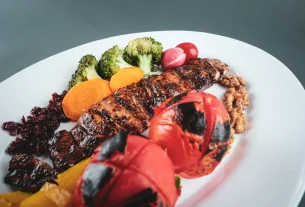Estimated Reading Time: 5 minutes
Estimated Reading Time: 5 minutes
HHy there!
If you’re dipping your toes into the world of CBD, or even if you’ve already taken the plunge, you’ve likely stumbled upon the question that everyone asks: how to choose the right CBD strength?
It can feel a bit like navigating a maze, right? Different concentrations, various delivery methods… it’s easy to feel overwhelmed. But fear not!
This article is designed to be your friendly guide.
We’ll break down everything, from understanding CBD strengths to finding the perfect dose for your individual needs.
I remember when I first started exploring CBD. I felt like I was in a foreign land! The numbers and percentages felt like some secret code.
One bottle said 100mg, another 500mg – what did it all mean? I spent hours researching, reading reviews, and ultimately, experimenting. The good news?
I’ve learned a lot along the way, and I’m happy to share my findings so you can bypass the confusion and get right to the benefits.
Let’s start with the fundamentals.
The “strength” of a CBD product usually refers to the total amount of CBD (cannabidiol) present in the entire bottle or container.
It’s expressed in milligrams (mg). For example, a 30ml bottle containing 600mg of CBD means that the entire bottle holds 600 milligrams of CBD.
The higher the number, the more CBD is in the product.
However, it’s also crucial to consider the serving size. This is where things can get a bit tricky.
A product might have a high total CBD content, but if the serving size is large, the amount you actually consume per dose might be higher or lower.
Always read the label carefully! Most CBD products will tell you the amount of CBD in each serving (e.g., per dropper, gummy, or capsule).
Different product types also influence how CBD strength is represented. For instance, with oils, the concentration is often stated in mg per ml.
With gummies, the strength is stated per gummy. With topical creams, it’s the mg of CBD per container.
This variation underscores the importance of carefully checking the product label and paying attention to serving size.
So, how to choose the right CBD strength for *you*? It’s not a one-size-fits-all equation. Several factors play a role:
I recall a friend, Sarah, who was struggling with sleep. She started with a relatively low-strength CBD oil, hoping for a gentle effect.
But since she was new to CBD, she didn’t feel anything. After a few weeks, she gradually increased her dose, and the difference was remarkable!
She finally got the sleep she desperately needed. It just shows that there is a process involved in discovering what works best for you.
Here’s a straightforward approach to help you figure out how to choose the right CBD strength:
Let’s talk about some of the common forms of CBD and their typical strengths:
CBD oils are a popular choice due to their versatility.
You can take them sublingually (under the tongue) for fast absorption, or add them to food and drinks.
The strength can vary widely, from 100mg to over 3000mg per bottle. A common starting point is 10-25mg per dose.
With oils, you have more control over your dosage, as you can easily adjust the number of drops.
Gummies offer a convenient and tasty way to consume CBD. They come in pre-measured doses, typically ranging from 10mg to 50mg of CBD per gummy.
This consistency makes them easy to manage, especially for beginners.
However, because they have to be processed through your digestive system, the effects can take longer to kick in.
CBD capsules are similar to gummies in terms of convenience and pre-measured doses. They are a discreet option, as you just swallow them with water.
Capsules typically contain 10mg to 50mg of CBD per capsule. Just like gummies, they have a slightly slower onset time.
CBD topicals are applied directly to the skin and are used for localized relief of pain or inflammation. The strength varies depending on the product.
Concentrations can range from 100mg to over 1000mg per container.
With topicals, the amount of CBD that gets absorbed into the bloodstream is generally less than with other methods.
Consider this when choosing the right CBD strength for your needs.
There’s a lot of misinformation out there. Let’s debunk some common misconceptions:
Finding your ideal CBD strength is a personal journey. It requires patience, observation, and a willingness to experiment.
By understanding the basics, being mindful of your body’s unique needs, and following a step-by-step approach, you can effectively learn how to choose the right CBD strength and unlock the potential benefits of this remarkable compound.
Remember, consistency is key. Once you’ve found what works for you, stick with it. And, most importantly, listen to your body.
Pay attention to how you feel and adjust your dosage accordingly. This journey is about finding balance and well-being.
It’s about self-discovery and taking control of your health.
Now, go forth, experiment, and discover what works best for you!
Frequently Asked Questions
What are the potential side effects of taking too much CBD?
While CBD is generally considered safe, taking too much can lead to side effects such as drowsiness, dry mouth, changes in appetite, and diarrhea. If you experience these, reduce your dose immediately. Always start low and increase gradually to prevent such occurrences.
What is the difference between full-spectrum, broad-spectrum, and isolate CBD?
Full-spectrum CBD contains all the cannabinoids and terpenes found in the cannabis plant, including trace amounts of THC (less than 0.3% by law). Broad-spectrum CBD also contains multiple cannabinoids and terpenes, but it is THC-free. CBD isolate is pure CBD, without any other cannabinoids or terpenes.
How long does it take for CBD to start working?
The onset time of CBD varies depending on the method of consumption. When taken sublingually (under the tongue), the effects can be felt within 15-30 minutes. Edibles and capsules typically take 30-90 minutes to produce effects, as they must be processed through the digestive system. Topical applications can have localized effects within a short time frame. However, it is always dependent on the individual as well.
Can CBD interact with any medications?
Yes, CBD can potentially interact with certain medications, particularly those metabolized by the liver’s cytochrome P450 enzyme system. If you are taking any medications, it’s crucial to consult with your doctor before using CBD. This will help you avoid any potential adverse interactions.




